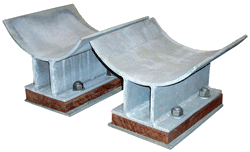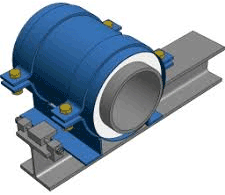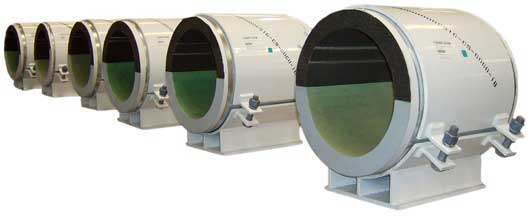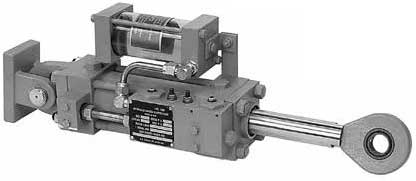 |
Guide to Cryogenic Pipe Supports |
Cryogenic pipeline supports, often called Cold Shoes, are common components of low-temperature pipelines such as those found in liquefied natural gas (LNG) processing facilities and other pipelines involved in liquefying other gases.
In many chemical plants, refineries and LNG facilities, processes occur where the product in the pipelines has very low temperatures (in some processes down to -160°C (-320°F). In these applications, the pipeline must be supported and isolated while allowing and/or restricting movement.
The ability to adequately insulate the pipeline helps to increase the efficiency of the pipeline system by preventing the "cold" in the pipeline from escaping to the environment. However, at points where both pipeline support and insulation are needed, a special solution is required.
Today, several terms have been developed to classify this type of support, including insulated support, cryogenic support and cold shoes. Regardless of the term used to describe insulated supports, they all have the same function: to support and insulate the pipeline.

Image.. Piping Technology & Products
One of the earliest methods of supporting cold pipes is still often seen in factories today. These first types of cold supports used wood, usually oak as an insulating material. The oak wood was cut to fit the curvature of the pipe and placed under the pipe. A steel cradle or other type of support component could then be placed under the insulation wood. Although this method was very crude, it served to insulate the pipe from the "steel pipe rack".
Later, various coatings were applied to prevent the wood from rotting. One method of protecting wood that is still used today is to impregnate the wood with various types of resins or plastics. The result of this method is a wood reinforced with plastic that helps to resist moisture while still maintaining the insulating properties of the wood.
Developments in the 1950s & 1960s ushered in the use of chemical compounds to replace previously used natural compounds. Foam Glass emerged as an excellent, low-cost insulator for use on cold pipelines. Foam glass is a lightweight material with a closed-cell structure and is manufactured primarily from recycled glass.
It is usually formed in molds filled with a mixture of broken glass and a chemical agent containing carbon. To form the material, heat is applied and the glass grains soften. The carbon gives off a gas that is trapped in the glass and forms the closed cell structure. However, because it is a great insulator, it can be used in those parts of the insulated support that do not bear the load.
Because the compressive strength of Foam Glass is very low, it is not used in load-bearing applications.

Another chemical compound developed during the same period is Polyurethane. Although not as good an insulator as Foam Glass, polyurethane offers greater load-bearing capacity due to its higher density. Polyurethane is formed by a stepwise growth polymerization process in which..
- a monomer with at least two isocyanate functional groups is combined with
- a second monomer with at least two hydroxyl groups in the presence of a catalyst and
- a catalyst manufactured to be resilient, flexible and durable. Polyurethane is widely used in pipelines in LNG facilities
By varying its density, polyurethane can be used in various locations to insulate pipelines while serving as vertical, lateral or anchor support. When a protective coating is applied (such as monolar mastic), the material becomes highly moisture resistant. When combined with other additives, polyurethane also offers excellent fire retardant properties.
Used between the steel pipe fixing components and the pipeline, polyurethane can support the pipeline in a number of ways. In most applications, multiple sections of 180-degree polyurethane are applied around the pipeline at varying lengths depending on the load or weight of the pipeline.

Image.. Piping Technology & Products
Many of the advances in the insulated pipe support industry are a direct result of technological advances and constantly changing industrial needs.
Reference(s) .. Piping Technology & Products
Related Post(s)

Snubbers are restraints used to control the movement of pipelines and equipment during abnormal dynamic...